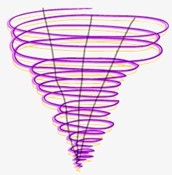If you often find yourself saying something like, “Well, part of me wants to do this, but part of me is leaning towards that,” you are not alone! We often feel divided, of two minds – or more! This is not about dissociative personality disorder: this is simply the normal experience of having a variety of preferences, inner voices, and energetic impulses. Facing the reality of “multiple selves” can be a bit unnerving for some. Let’s explore a few contemporary lenses that may shed some light on this experience and its everyday presence in our lives.
Exploring psychological lenses
The idea that personality is complex is not new in psychology. Freud’s map of id, ego, and superego is one version. Fritz Perls recognized this inner multiplicity in Gestalt Therapy. “Ego state” is a psychodynamic term which refers to organized clusters of perceptions, cognitions, and emotions. When these “states” are too separate, problems can arise. The psychological work is to bring these into consciousness and bring about greater integration.
Jung’s notion of “complexes” is relevant here. A complex is an instinctive pattern, associated with particular emotions, memories, perceptions, and wishes. Such a pattern is often linked with a particular image or theme that has its own coherence. Jung felt that the complexes need to be met, brought into consciousness, and worked through.
Stan Grof’s concept of COEX systems (COEX is short for system of condensed experience) is another example. Grof, well known as a transpersonal psychiatrist, offers this definition:
A COEX system consists of emotionally charged memories from different periods in our life that resemble each other in the quality of emotion or physical sensation that they share. Each COEX has a basic theme and represents their common denominator…. The unconscious of a particular individual can contain several COEX constellations.[i]
In Psychosynthesis, the therapeutic approach created by Robert Assagioli, subpersonalities are understood as unconscious patterns or aspects of the self. As long as they remain outside of conscious awareness, they may run many aspects of our lives – even though we may continue to think of ourselves as unitary, one self. But we can bring attention to this inner cast of characters through active imagination, hypnosis, somatic awareness, and simply by responding spontaneously to inquiries from a therapist. There is then an opportunity to bring about greater integration and to make more conscious choices.
The Life Spiral Image
A COEX system may be embodied in one or more subpersonalities. We can picture COEX systems, complexes, or major subpersonalities as threads (the vertical lines) that run through what I sometimes describe as our unfolding life spiral.

Life spiral with threads
When people complain that they have already done so much work on particular issues (“why am I still dealing with this!”), I like to share this image with them. The threads (challenging themes and patterns) may run through our expanding lives, but (ideally) we grow in perspective and in the skillfulness with which we relate to them.
Understanding Subpersonalities
Internal Family Systems is an approach developed by Richard Schwartz and widely recognized these days. From this perspective, we are invited to recognize that there is something in us that can be aware of our subpersonalities but not identified with them.[ii] This Observer may be described simply as Awareness or called the Self. From a psychospiritual perspective, experience of the latter (like the awareness that is cultivated in mindfulness meditation) can be very powerful.
When identification with the fragmented parts of self is the norm, each part is experienced as the “self,” Each part is in charge of an aspect of the personal theater; each has a job to perform. Bringing the Self (Observer or Awareness) into focus (which may call for some practice!) shifts the parts into the place of “me” rather than “I.” I am aware of having these parts, I can witness them: they are not what I essentially am.[iii]
Some subpersonalities are quite common: a Judge or Inner Critic, a Controller, Skeptic, Victim, Rescuer, Inner Child (which may be Wounded, Playful, or Innocent), Rebel, Warrior Good Girl or Boy, Achiever, Seeker. Some are quite unique in their focus and in the names that people give them: the Pope, the Giver, the Shark, the Clown, the Volcano, the Ghost, the Dead Tree, the Scared Rabbit. (I’m drawing some of these from the experience of clients….) Can you feel into or imagine the experience of each of these patterns? Are there some you recognize, and others that sound foreign?
How our Parts may Shape Experience
Individually, a given part may prove to be an obstacle to peace of mind, healthy relationships, or life satisfaction. A repetitive acting out of a certain subpersonality pattern may keep someone stuck in a painful loop. Likewise, parts may serve as barriers to personal and spiritual growth since they create persistent reactions to life situations. They can act as blinders to new possibilities and deeper insights.
Blinders are not only created by “negative” subpersonalities, such as the Victim or Critic. Any subpersonality ultimately limits our seeing and being in some way. The Good Girl struggles to remain within strict boundaries of behavior, and the Playful Child refuses to acknowledge the importance of responsibility. On a deeper level, when we are identified with any particular aspect of the self (which is often linked to a particular developmental stage as well as to a particular issue/experience), our access to deeper perspectives is limited.
That’s one point of view. But these limited points of view are just part of life, and as we become more aware of their deep roots – in earlier experiences and interpretations of life – we can develop an appreciation for their purpose. We begin to see how these perspectives/characters develop in order to protect us. They are trying to help us navigate life’s challenges, and they see their role as essential for our survival!
The Gifts of Awareness
On the other hand, when our awareness of these ego states expands and deepens, we can see the whole “play” on the stage of the Self. We are gradually freed from the grip of particular patterns and perspectives – a little at a time. We may need repeated experiences with a part, but with practice, we eventually recognize its presence and influence. As we experience more freedom from identification with parts, we can allow them to play out healthier versions of themselves and contribute to our lives. This is not about getting rid of parts! (When they feel the threat of banishment, they tend to dig their heels in! Far wiser to negotiate an amended job description…)
Internal Family Systems encourages curiosity and compassion as we listen to parts and try to understand their origin, their history, their fears, their commitment to protecting us. Developing this kind of relationship with them sets the stage for building trust. Eventually a part is able to realize we are not trying to eliminate it but find a milder, more constructive role for it to play in our lives. The part that was always on High Alert, with fearful warnings and avoidances, may then be willing to serve instead as a gentle reminder to proceed carefully and thoughtfully.
With this approach, parts can show up when they show up and participate more quietly, from the sidelines, in the intricate dance of life. The whole process is guided more and more by the observing, compassionate Self. We have access to a more fluid way of living, as well as to the experience of being “something more” than this play – even if we don’t know exactly what that means. This may or may not involve a “spiritual” lens, but if we are already on a spiritual path, our way forward may become clearer. Seeing the cast of characters, and understanding how they have shaped our lives, may even serve as an opening to the spiritual journey: if this and this and this are not what I really am, then who or what am I?
[i] S. Grof, Psychology of the future (Albany: State University of New York Press, 2000), p. 22. Grof’s essential theme strikes me as reminiscent of the working of an archetype from a Jungian perspective.
[ii] R. Schwartz, Introduction to Internal Family Systems, 2nd edition (Boulder, CO., 2023). Also R. Schwartz, No Bad Parts: Healing Trauma and Restoring Wholeness with the Internal Family Systems Model (Boulder, CO., 2021). For other useful sources, see J. Rowan, Subpersonalities (New York: Routledge, 1990), and J. Watkins and H. Watkins, Ego states: theory and therapy (New York: W.W. Norton and Co., 1997). A wonderful resource fo therapists is Robin Shapir’s Easy ego state Interventions: strategies for working with parts (New York: W.W. Norton and Co., 2016).
[iii] See K. Wilber, Integral Psychology (Boston: Shambhala, 2000) pp 246-7.
Image by Alexa from Pixabay

